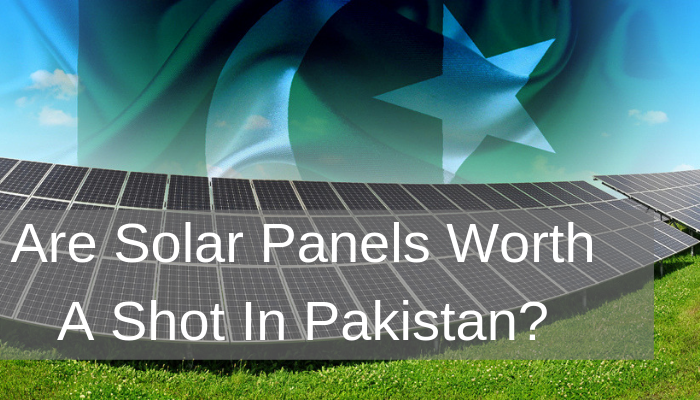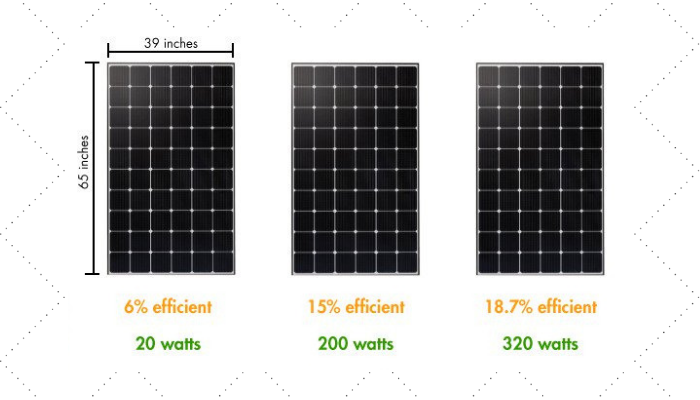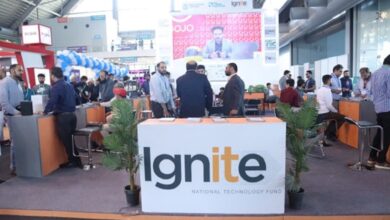Are Solar Panels Worth A Shot In Pakistan?
Energy Efficient And A Better Investment

With all the hype about Solar Panels, We decided to give you a detailed insight into What Solar Panels are And How Solar Panels Work? And Is Investing in Solar Panels Worth a shot in Pakistan?
Introduction To Solar Panels?
Solar Panels are basically panels with Photovoltaic Cells (PVC) embedded. PVC takes the packeted thermal energy (Photons) from the sun and converts them into electricity to facilitate you.
How Much Energy Can A Solar Panel Provide You?
Each panel is rated by its DC output power under standard test conditions (STC), and typically ranges from 100 to 365 Watts (W). The efficiency of a panel determines the area of a module given the same rated output – an 8% efficient 230 W panel will have twice the area of a 16% efficient 230 W panel. There are a few commercially available solar modules that exceed the efficiency of 24%.
Is Investing In Solar Panels Worth A Shot In Pakistan?
First thing first, Country like Pakistan with all these energy crises does need some support system like Solar Panels in order to replace energy sources. Also, Pakistan is uniquely located. It has extensive solar rays coming to it. It has certain regions that are extremely hot for over 6 months in a year. But the question is that is ‘Solar Panels’ the solution to it? And Is it worth spending all that money?
The Cost
Solar panels come on per watts basis, that is, a solar panel can be of 100 watts. Putting two such panels will get you 200 watts and so on.
There are 3 main constituents we need to get when going for Solar Panels:
- Solar Panels
- Batteries: to store the produced energy to be used later
- Invertors: used to convert electricity into a form that is usable by our appliances.
The formula is simple Rs.100 per Watt + Inverter, Batteries And Maintainance cost.
let’s assume the following situation for cost calculation:
We need to run the following items on solar energy:
- 2 Fans
- 2 Energy Savers
- 1 laptop
- and few chargers
Here’s the corresponding load we will need:
- 2 Fans: 110 x 2 = 220 Watts
- 2 Energy Savers: 20 x 2 = 40 Watts
- 1 laptop = 20 Watts
- and few charges = 10 Watts
- Total: 270 Watts
Ideally speaking we will require 270 Watts of energy to be produced by a solar system that we are going to deploy in our example case.
Practically, we will deploy 540 Watts panels, because when on Solar energy – during day time – we need to power our appliances with 270 watts, plus we need to charge our batteries too for usage during load-shedding in the night.
Here is the corresponding cost for 540 Watts of Panels:
- Solar Panel: Rs. 100 per watt = Rs. 100 x 540 = Rs. 54,000
- Invertor – we will need 1KW inverter = Rs. 26,000
- Batteries: 2 x 200 Amp batteries: Rs. 13,000 x 2 = Rs. 26,000
- Total Cose: Rs. 54,000 + Rs. 26,000 + Rs. 26,000 = Rs. 106,000
Maintenance Cost
- Life of solar panels is around 25 years, however, with time the efficiency or electricity-production ability of panels lessens
- The lifetime of dry-battery is around 5-7 years
- The lifetime of liquid-battery is around 2 years
Due to the high maintenance cost, it has not become the alternate for energy, as people don’t view it as a one-time investment rather take it as very demanding. It will take time for solar energy to be a viable solution. However, with the cheaper solar equipment, the cost becomes sustainable.
Go For It!
If you have extra money to invest, invest it in PVCs. Not only that it’ll help the country recover from its energy crisis but after the one-time fitting of the panels the maintenance cost can’t exceed the high electricity bills you are to pay every month. It is better to go for partial Solar Energy dependency. Like, have the bigger units run on Solar Panels. Such as the Air Conditioners, Washing Machines etc or have the smaller units run on Solar Panels such as lights and fans. Choose either of the two in order to divide the burden. By the pace at which technology is moving it can be rightly said that the future is Solar Energy! So don’t get left out. As technology advances more efficient and cheaper means may arise and then adopting them will be way easier.
Hope you find the article informative! Comment below your remarks.
PTA Taxes Portal
Find PTA Taxes on All Phones on a Single Page using the PhoneWorld PTA Taxes Portal
Explore NowFollow us on Google News!







Thank you Zeshan sb for your valuable details
Sir Zeshan Danish,
We are pleased to hear from you. Thank You for providing us with such insight from the actual Solar World. The information you provided with is of great value and interest. Thank You.
I think that your estimates are wildly off. First of all, cost per watt is around Rs. 56 for a PV panel made by a reputed company such as Jinko Solar. There are other cheaper PV panels that cost between Rs. 30 to Rs. 40 per watt.
Next up, you can buy a 2.2 KW solar invertor from Inverex for Rs. 22,000. Also you might want to mention that some of these invertors come with PWM chargers which are unable to harness the full potential of the PV panels that you invest on. So either one might need an MPPT controller, or look for an invertor that comes with one that’s built-in.
By the way, some companies advertise that their invertors have MPPT controllers whereas in reality they have PWM.
Charges for solar stands and DC wires are another thing that one may want to consider. DC wires aren’t as cheap as wires used for AC voltage. Circuit breakers between the batteries, panels and invertor is another thing one may want to consider.
Next up, 200 Amp batteries might cost Rs. 13,000 if one has old ones to replace them with. Otherwise the retail price for cheapest 185 Amp battery is around Rs. 17,000.
Finally, a flooded battery doesn’t always produce the current that’s on the label. In most cases a 200 Amp flooded battery would last for about 4 to 5 hours providing only half of the advertised/labeled current.
I think people of Pakistan may be took a little more time to educate themselves that how they can cut down their elecreicity bill by the Installation of solar system of their desired power. The Calculations was given at STC but i think you need 600 to 800 watts of panels so that you can run your 2 fans 2 led saver and laptpo solar is directly proportional to Weather if the weather is clean production of electricity will be Green. Do clean your solar panels because its the main reason of degration of the solar panels do not wash panels when the temperature or sun at its peak. That cause instant change in temperature and the silicon becomes leak and water wapors damage panels for more search Degration of solar panels.
Indeed! but in my point of view, the pace at which Pakistan is moving towards technological advancement within no time Solar System will become the major energy source here. But yes! We haven’t reached that elevation as yet.